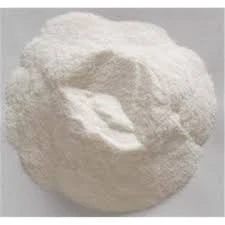
Nov . 13, 2024 12:13 Back to list
what is hpmc made from
What is HPMC Made From?
Hydroxypropyl Methylcellulose (HPMC) is a widely used pharmaceutical excipient and a cellulose derivative known for its versatile applications in various industries, including pharmaceuticals, cosmetics, food, and construction. Understanding what HPMC is made from is crucial for grasping its properties, benefits, and applications.
Origin of HPMC
HPMC is derived from cellulose, which is a natural polymer found in the cell walls of plants. As a structural component of plant cells, cellulose provides rigidity and strength. To produce HPMC, the cellulose undergoes a series of chemical modifications, which involve etherification processes. In these processes, cellulose is treated with propylene oxide and methyl chloride, resulting in a compound with hydroxypropyl and methyl substituents.
The Process of HPMC Production
1. Source Material The production begins with the extraction of cellulose from sources such as wood pulp, cotton, or other plant materials. This cellulose serves as the backbone for HPMC.
2. Purification The extracted cellulose is then purified through several steps to remove impurities, lignin, hemicellulose, and other non-cellulosic components. This step is critical because the purity of cellulose affects the quality of the final HPMC product.
3. Etherification The purified cellulose undergoes etherification, during which it is reacted with propylene oxide and methyl chloride in an alkaline solution. This reaction introduces hydroxypropyl and methyl groups onto the cellulose chain, creating HPMC. The degree of substitution (i.e., how many of the hydroxyl groups in the cellulose have been replaced) can be controlled during this process, impacting the properties of HPMC.
4. Drying and Milling After etherification, the product is usually in a wet form and must be dried. Once dried, it is milled into a fine powder, which is how HPMC is typically used in formulations.
Properties of HPMC
HPMC is valued for several key properties
- Solubility HPMC is soluble in water, forming a clear gel at certain concentrations
. This property makes it an ideal thickening and gelling agent in various formulations.what is hpmc made from

- Viscosity The viscosity of HPMC solutions can be adjusted by altering the degree of substitution and the molecular weight of the cellulose used, making it versatile for different applications.
- Stability HPMC is stable under a wide range of pH and temperature conditions, which makes it suitable for various formulation environments.
- Biocompatibility Being derived from natural cellulose, HPMC is biocompatible and non-toxic, which is essential for its use in pharmaceuticals and food products.
Applications of HPMC
Given its unique properties, HPMC finds applications in numerous fields
- Pharmaceuticals HPMC is commonly used as a binder, film-forming agent, and controlled-release agent in tablets and capsules. It helps improve the stability of active pharmaceutical ingredients (APIs) and enhances the formulation's overall performance.
- Cosmetics In the cosmetics industry, HPMC serves as a thickener and stabilizer in creams, lotions, and gels, providing desirable textures and enhancing product stability.
- Food Industry HPMC is used as a food additive, where it acts as a thickener, emulsifier, and texturizer, improving the mouthfeel and shelf life of food products.
- Construction HPMC is incorporated in construction materials like tile adhesives and cement-based products to improve workability and water retention.
Conclusion
In conclusion, Hydroxypropyl Methylcellulose (HPMC) is a versatile compound made from natural cellulose through chemical modification. Its unique properties and applications make it an invaluable ingredient in various industries, from pharmaceuticals to food and cosmetics. Understanding what HPMC is made from and how it is produced helps stakeholders appreciate its vital role in enhancing product performance and quality across multiple sectors.
-
Versatile Hpmc Uses in Different Industries
NewsJun.19,2025
-
Redispersible Powder's Role in Enhancing Durability of Construction Products
NewsJun.19,2025
-
Hydroxyethyl Cellulose Applications Driving Green Industrial Processes
NewsJun.19,2025
-
Exploring Different Redispersible Polymer Powder
NewsJun.19,2025
-
Choosing the Right Mortar Bonding Agent
NewsJun.19,2025
-
Applications and Significance of China Hpmc in Modern Industries
NewsJun.19,2025







